This post may contain affiliate links. I only recommend products or services that I personally use or trust, promise!
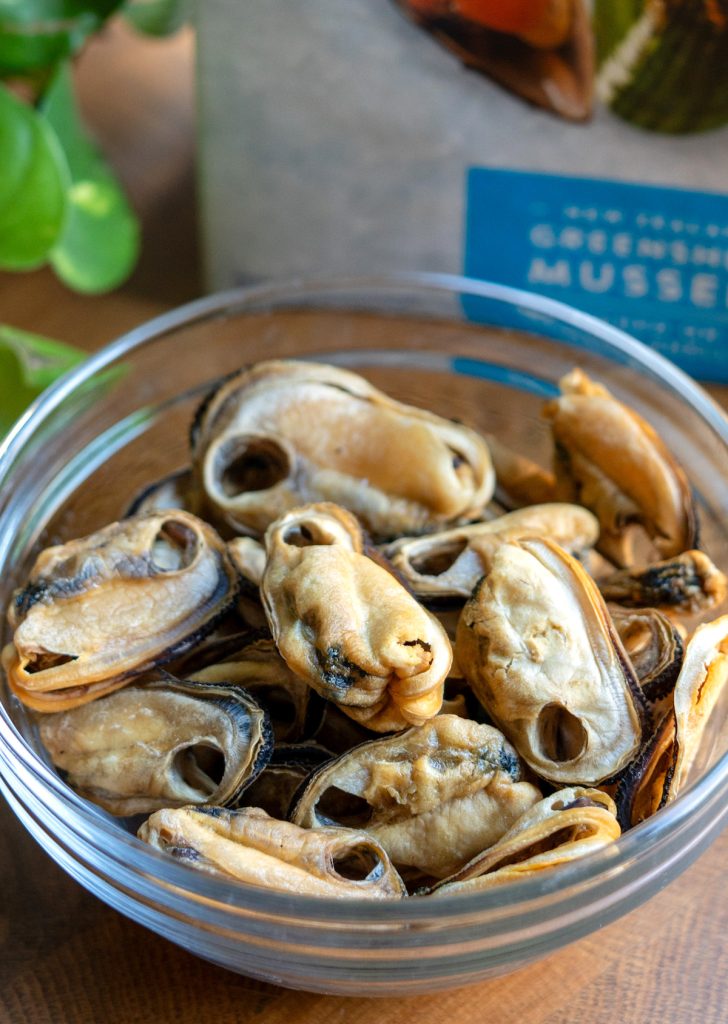
Calling all dog lovers and health-conscious pet parents! If you’re looking for a nutritious and delicious treat to pamper your fur-baby, you’ve come to the right place. My dogs LOVE dehydrated mussels.
From their natural source of protein to their joint-supporting nutrients, these little snacks have incredible health benefits for humans and dogs alike. They can be used as snacks, or as toppers to supplement your dog’s diet (more on that later).
Table of Contents
General Nutrition Facts
The specific nutritional content of dehydrated mussels for dogs can vary depending on the size and method of dehydration. Here are some general nutritional facts that are important in overall dog health:
- Protein- mussels are a good source of protein, which is essential for muscle growth and repair in dogs.
- Omega 3 fatty acids– mussels are rich in omega-3 fatty acids, such as EPA (eicosapentaenoic acid) and DHA (docosahexaenoic acid). These fatty acids are beneficial for skin, coat, and joint health. Green lipped mussels in particular have unique anti-inflammitory compounds, such as eicosatetraenoic acid (ETA), which are not found in other mussel species.
- Glucosamine and Chondroitin- especially in green lipped mussels, these compounds can help reduce inflammation and improve joint function, making dehydrated mussels an excellent supplement for dogs with arthritis or joint issues.
- Vitamins and Minerals- mussels are a good source of vitamin B12, iron, zinc, selenium, and manganese.
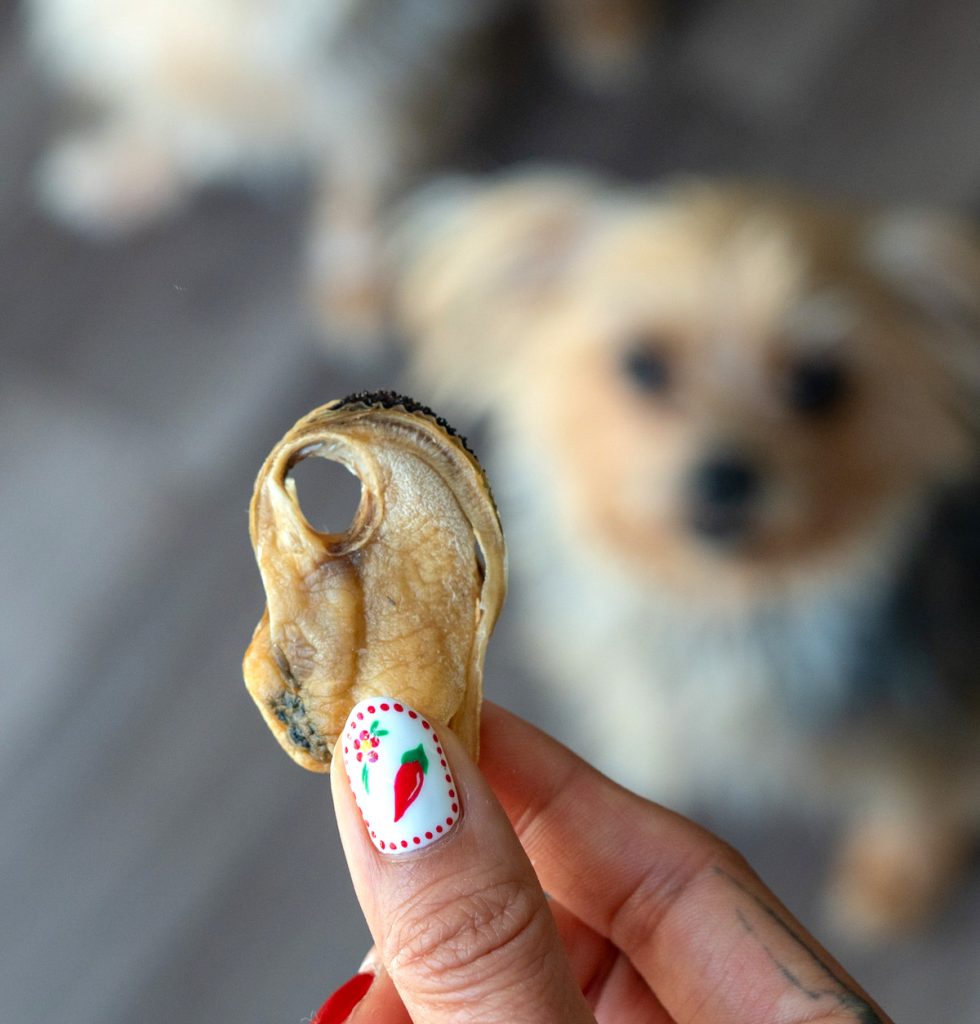
Ingredients
You only need ONE ingredient!
Green lipped mussels- you can use any kind of mussels, but ideally you want the green lipped mussels!
This is because they are known to have a higher level of nutrients.
Equipment needed
I use my Ninja 10-in-1 Countertop Convection Oven for this entire recipe. It’s so convenient and perfect because it functions as an oven AND as a dehydrator, among many more functions!
How to make it
Despite being time-consuming, this recipe is SUPER easy because it’s mostly a set-it-and-forget-it process.
- Start by thoroughly cleaning the mussels under cold water to remove any dirt.
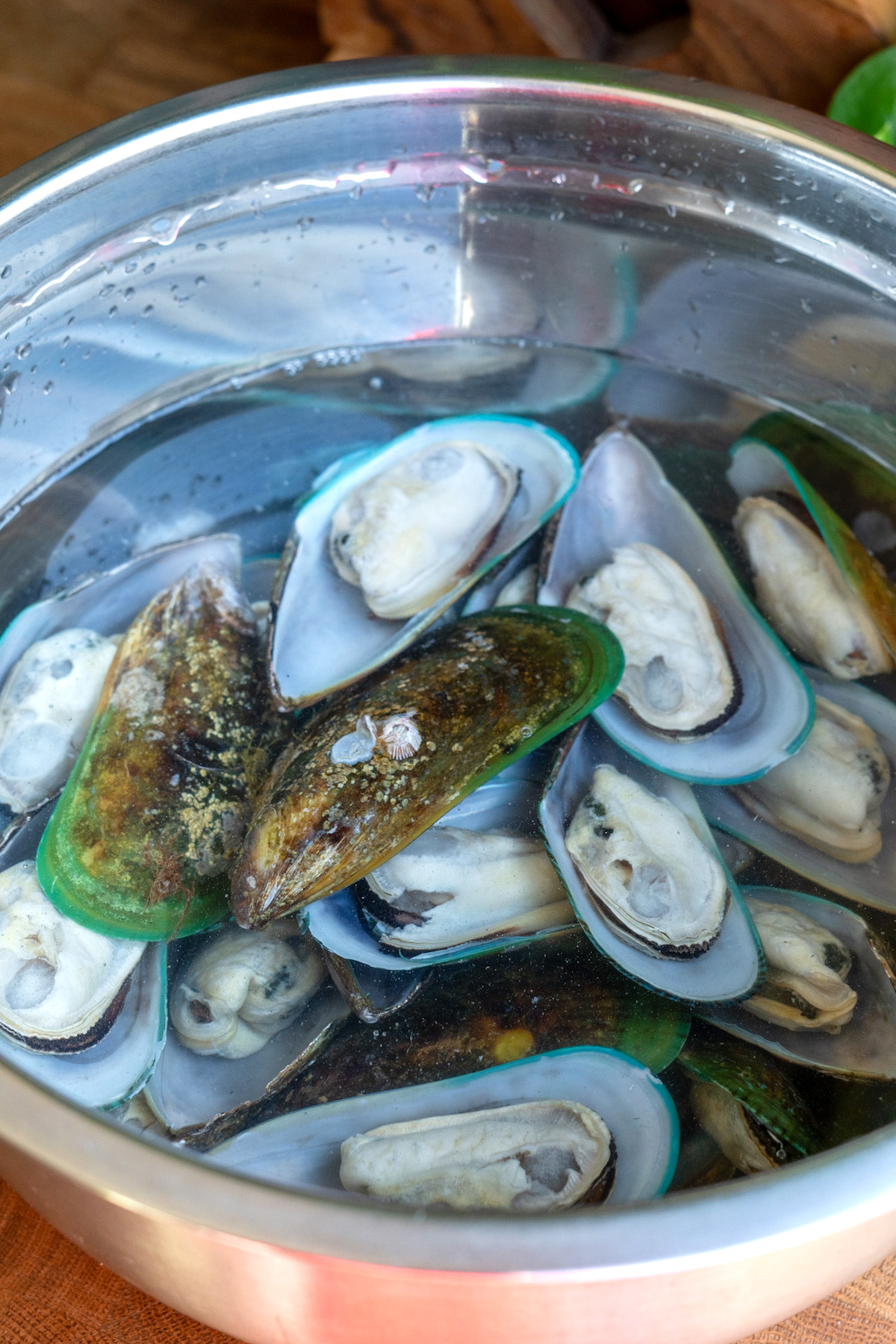
- If using frozen mussels, set the oven to 320F and bake the mussels for 7-8 minutes.
- If using fresh mussels, steam or boil until they open. This should only take a few minutes. Discard any mussels that don’t open.

- Remove and discard the shells (and beards if any).
- Gently remove as much moisture as you can with paper towels.
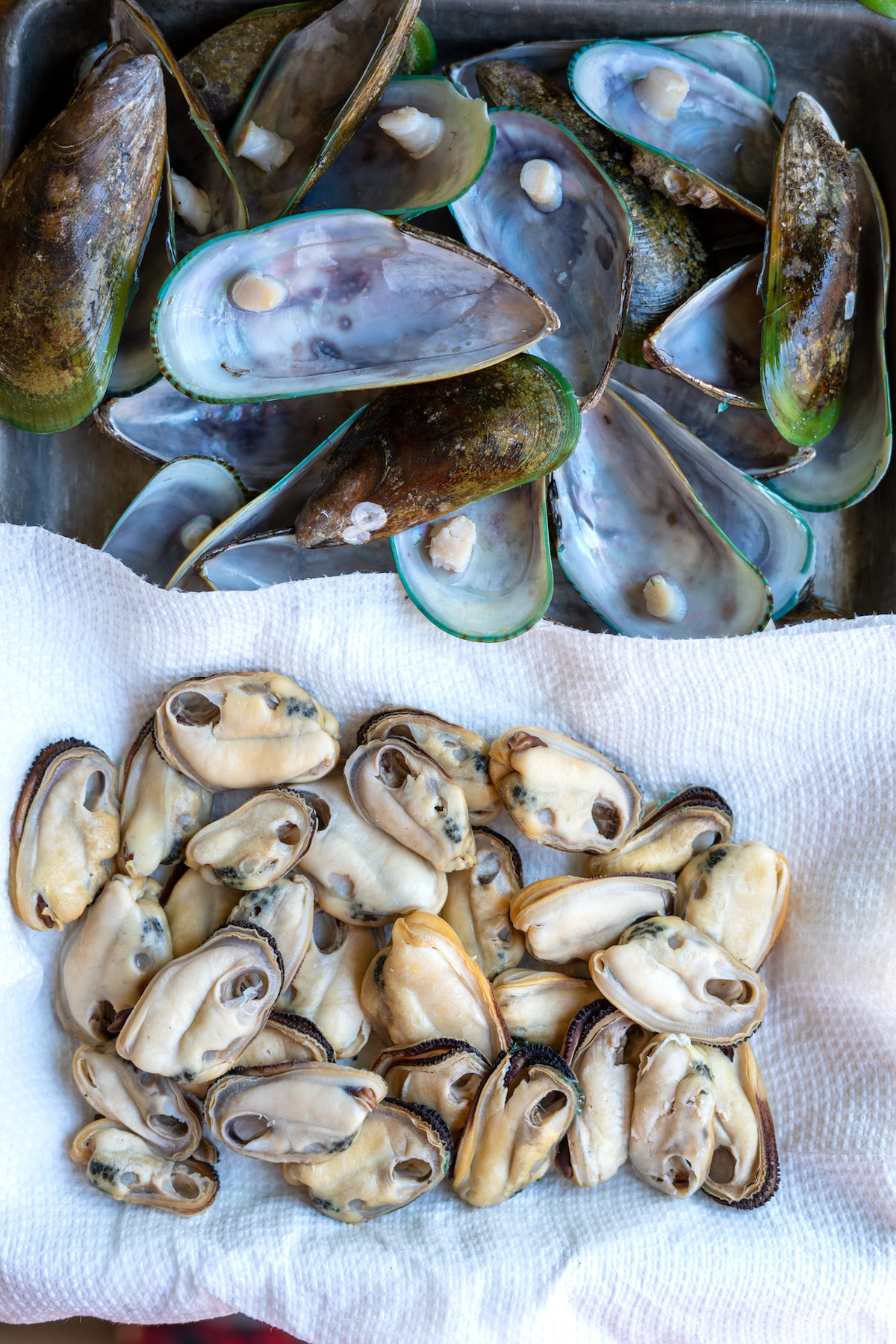
- Line up the cooked mussels on your dehydrator tray
- Dehydrate for 2 hours at 155 F degrees.
- After 2 hours, reduce the temp to 135 F degrees and continue dehydrating for another 6-8 hours.
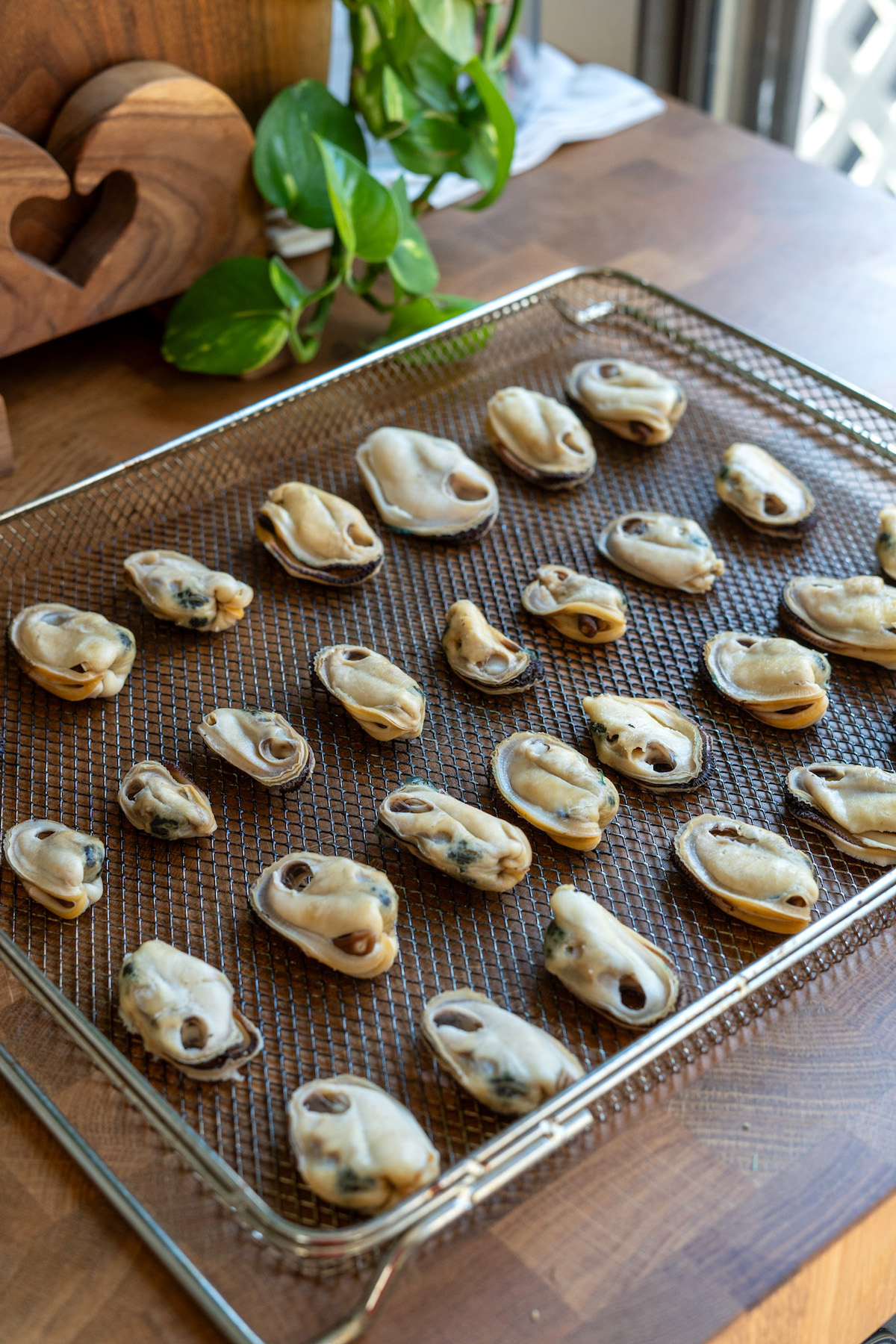
Check for dryness & how to store
It’s important to ensure that the mussels are completely dry before storing them to prevent mold or bacterial growth.
- After the first 8 hours, they should be hard and brittle, with no moisture remaining. If they are still slightly soft or pliable, continue drying them until they reach the desired consistency.
- Once the mussels are fully dehydrated, remove them from the dehydrator and let them cool completely. Store in an airtight container or vacuum-sealed bags in a cool, dry place.
How long are they shelf-stable?
Properly dehydrated mussels can be shelf-stable for a long time if stored correctly.
When stored in an airtight container (or vacuum-sealed bags) in a cool, dry place away from direct sunlight, dehydrated mussels can last for several months to a year.
That being said, it would take a humongous batch of dehydrated mussels to store for that long anyway. For the amount this recipe makes, you will probably go through it all within a month or 2, if not less.

How to use them as a meal-topper
If you prefer to use these as a meal-topper, I recommend rehydrating them first (you can do the same if using these as treats).
You can rehydrate the dried mussels by soaking them in warm water or broth for a few minutes before adding it to your dog’s meal.
Do the mussels lose some nutrients during the dehydration process?
Dehydrated mussels do have some nutrient loss during the dehydration process, as do other dehydrated foods.
Some heat-sensitive vitamins like vitamin C may degrade or be completely destroyed during the dehydration process. Other nutrients such as protein, minerals, and certain vitamins remain relatively stable.
Dehydrated mussels are still a good source of protein, omega-3 fatty acids, iron, zinc, and other essential nutrients, depending on the degree of processing and storage conditions.
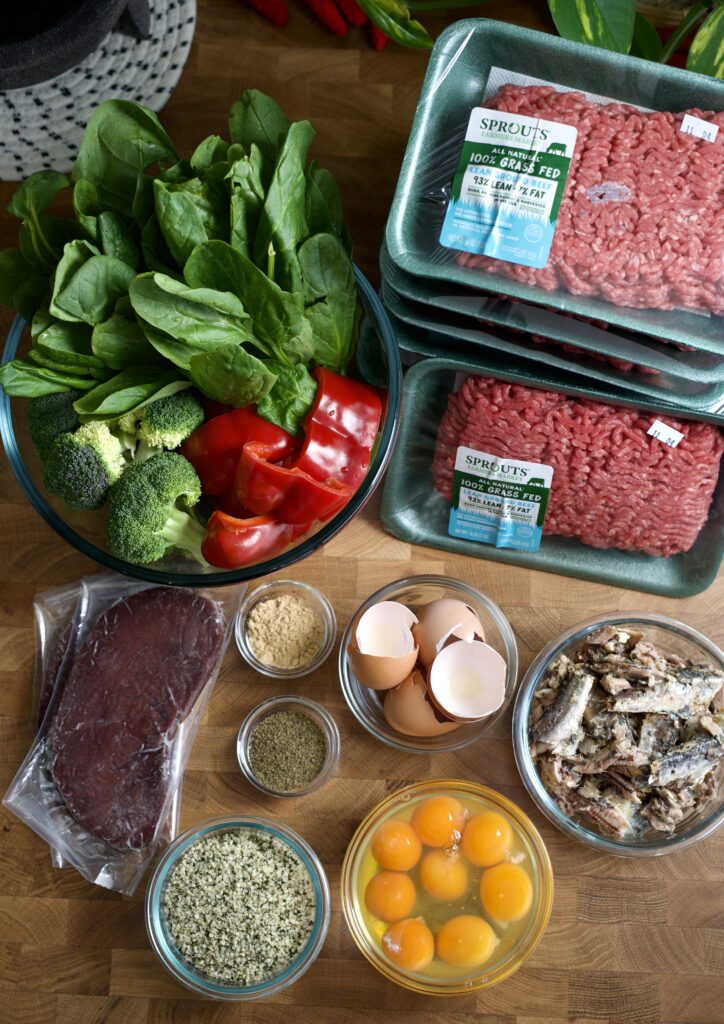
Balanced Dog Food Recipe
If you’re looking for a healthy recipe you can make at home for your pups, I HIGHLY recommend checking out this balanced dog food recipe!
This recipe was formulated by canine nutritionists Dr. Karen Becker and Rodney Habib. I scaled it up to 8x the amount so I can make it in bulk and freeze it. It’s SUPER convenient and our dogs are so healthy!
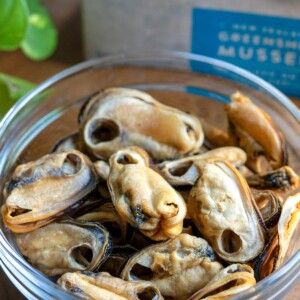
Green Lipped Mussels for Dogs
Equipment
- Dehydrator
Ingredients
- 2 lbs Green lipped New Zealand mussels on half shell, you may substitute any kind of mussels, but green lipped are the best
Instructions
- Start by thoroughly cleaning the mussels under cold water to remove any dirt.
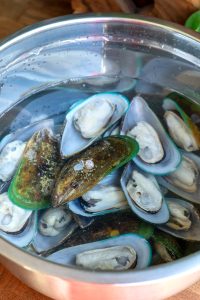
- If using frozen mussels, set the oven to 320F and bake the mussels for 7-8 minutes.If using fresh mussels, steam or boil until they open. This should only take a few minutes. Discard any mussels that don't open.

- Remove and discard the shells and beards if any, then pat the cooked mussels dry with a paper towel. Gently remove as much moisture as possible.
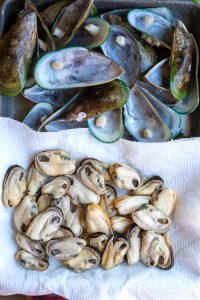
- Line up the cooked mussels on your dehydrator tray in one even layer. Dehydrate for 2 hours at 155 F degrees, then for another 6-8 hours at 135 F degrees
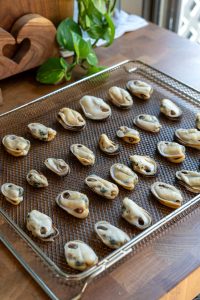
- After the first 8 hours, they should be hard and brittle, with no moisture remaining. If they are still slightly soft or pliable, continue drying them until they reach the desired consistency. This recipe should yield about 3 oz of dehydrated mussels.
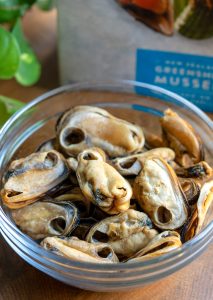
- Once the mussels are fully dehydrated, remove them from the dehydrator and let them cool completely. Store in an airtight container or vacuum-sealed bags in a cool, dry place.
Notes
FAQ’s
- How do I store them and how long are they shelf stable?
- When stored in an airtight container (or vacuum-sealed bags) in a cool, dry place away from direct sunlight, dehydrated mussels can last for several months to a year.
- Can I dehydrate more than 2 lbs worth of mussels?
- Yes, as long as your dehydrator has the space to make more! You may or may not need to extend the dehydrating time.
- Can I use other kinds of mussels?
- Yes you can, but green lipped mussels are the best nutrition-wise.
- What dehydrator do you use?
- For this recipe, I use my Ninja 10-in-1 Countertop Convection Oven. It’s so convenient and perfect because it functions as an oven AND as a dehydrator, among many more functions!
Nutrition information is automatically calculated, so should only be used as an approximation.











Hello! I don’t have a dehydrater- is there another way to make this?
If your oven setting goes as low as 135 degrees F, then you can use your oven with the oven door slightly cracked open (you can use a wooden spatula to hold it slightly ajar).